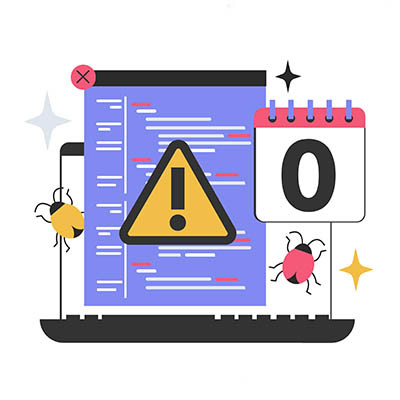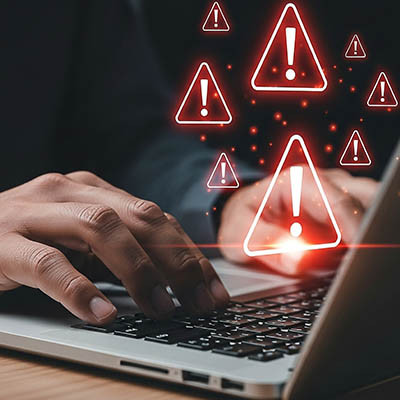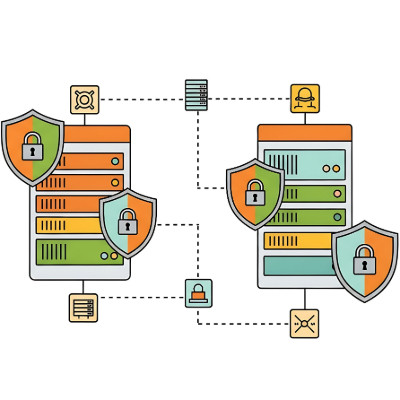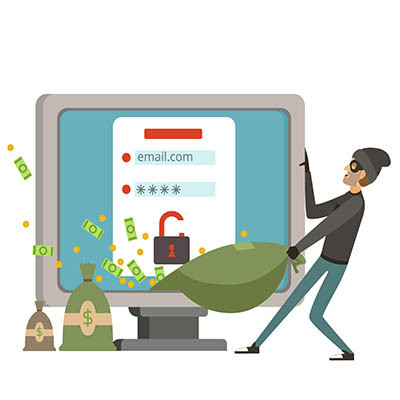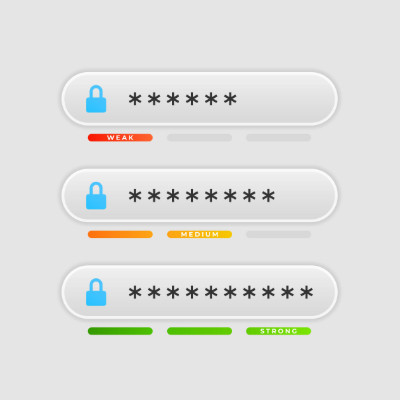Let’s imagine that your business has a hidden back door—one that your building manager doesn’t even know exists—and that door leads straight into the heart of your office. By the time someone finds out that door exists, someone could have snuck in to wreak all kinds of havoc, unbeknownst to you. This is what is known as a zero-day threat; it’s a security vulnerability that is being actively exploited in the wild, one that was previously unknown to the vendor and unpatched against, and it’s a serious problem for any SMB.
Aniar Blog
We’ve all said it. It’s the unofficial motto of pragmatism, the quiet commitment to frugality that businesses cling to: If it ain't broke, don't fix it.
It feels responsible. It feels safe.
Here is the hard truth from an IT professional: When it comes to your business technology, this motto is a recipe for disaster. It is the single most dangerous, most expensive, and highest-risk strategy you can have.
With over $101 million in jewelry stolen, the recent Louvre heist was a costly success for criminals. However, French publications suggest the thieves may have encountered less resistance than an organization of the museum's stature should provide, thanks to a documented history of severe cybersecurity vulnerabilities.
This history offers a crucial lesson for all businesses: Foundational security flaws can undermine even the most complex physical protections. Let's examine the documented oversights and what they imply about the museum's current security posture.
You probably want a certain onboarding experience for any new hires: meeting the team, getting their computer set up, setting up all necessary accounts, and going through any necessary training. In reality, you’re likely going to spend most of that time ensuring secure access to all necessary resources, and until they get into the swing of things, they’ll feel a little awkward and out of the loop rather than a part of the team. Here’s how you can build a better onboarding process to make sure this doesn’t happen.
When considering the strengths of shapes, the triangle is generally considered the strongest, its three vertices creating the optimally stable configuration. The same can be said of your business’ approach to cybersecurity. The difference is that, instead of three equal legs working together to support whoever is seated on a stool, your business’ cybersecurity relies on equal investment in three key areas: your people, your processes, and your technology.
Let’s talk about how this holistic approach puts your business in the best position to stay secure, and where many organizations fall short.
I’m sure you have some idea of what you’d want any new hire’s first day to be like. They’re welcomed by the team, and brought to their workstation where everything is ready for them to get to business: all accounts are set up, the laptop works, and there’s a game plan for them to follow.
In reality, however, this first day is likely spent obtaining any available laptop and ensuring your new hire has the secure access they need. Meanwhile, the new team member feels increasingly like an outsider, rather than a contributor, as they jump through these hoops. Less appealing than the alternative, right?
Let’s discuss how crucial it is to get the onboarding experience right.
How many duties and responsibilities fall on you as a business owner? More often than not, you’ll find yourself wearing multiple hats, picking up the slack where you can because you just don’t have the time or the resources to hire staff for certain specialized tasks. Unfortunately, IT maintenance and management is one such role that falls to the wayside all too often—but it doesn’t have to.
AI is everywhere, helping us do everything from writing emails to analyzing data. It's a powerful tool that can make work more efficient, but it also comes with a hidden risk you should be aware of: prompt hacking.
This isn't some half-baked science fiction. As more businesses rely on AI, understanding prompt hacking isn't just a job for the IT department—it's something everyone needs to know.
How many devices around you are connected to the Internet? While connected technologies inject convenience into our lives, it comes at a cost: security. Let’s discuss how the rise of connected devices, collectively known as the Internet of Things, has taken a toll on network security and what you need to know about it to protect your business.
Today’s cyberthreats are invisible, they’re malicious, and they can bring a business to its knees. For many small businesses, cybersecurity feels like a distant problem—a concern for the corporate giants with sprawling server farms. Unfortunately, that’s a dangerous misconception. Every business, regardless of size, is on the front line.
It’s the summer solstice tonight, the official start of the summer season. While most of us want to focus on honing our grilling skills and soaking up as much sun as possible, we can’t afford to let our cybersecurity awareness falter as a result.
Let’s review how you can stay secure while enjoying the season.
Cybercrime has gotten a lot scarier as the methods have become more sophisticated and difficult to detect. They might look like official business, but in reality, they are dangerous and well-thought-out attacks that can endanger your company and all those who work for it. Today, we want to break down some of the ways these cyberthreats can fool even the most cautious employees.
Imagine leaving the physical doors of your business unlocked overnight. The thought is unsettling, isn't it? You wouldn't risk your assets, your hard work, and the trust of your clients like that. That's precisely the risk many small to medium-sized businesses (SMBs) unknowingly take by underestimating the importance of cybersecurity.
Let’s explore just how important proper cybersecurity truly is.
We dedicate significant attention to safeguarding your digital assets, but have you cast a similarly critical eye on the tangible security of your business premises? Nowadays, ensuring the safety of your physical office, its valuable assets, crucial resources, and most importantly, your dedicated employees, is paramount.
We want to highlight the range of options available to help you effectively manage your physical infrastructure.
A strong cybersecurity posture isn't just about installing the latest software or ticking boxes on a compliance checklist. It's about building a culture of security where every member of your team is actively engaged and invested in protecting your collective digital well-being… but how do you achieve that buy-in, beyond simply mandating policies?
It starts with illuminating the "why" behind the "what."
Quick—how many passwords do you have to remember? Chances are, it’s more than you might expect… especially when you factor in both your personal ones and those you maintain for your business.
After all, it is risky to the point of irresponsibility to repeat your passwords across accounts, especially those you maintain for your business. This kind of repetition can easily lead to financial losses and reputation damage, as it facilitates a data breach.
Running a business today presents unique opportunities and challenges. For instance, safeguarding business information and systems—both physical and digital—is no longer just an IT department concern; it is fundamental to operational continuity and overall success.
The real question is whether or not you are prepared to deal with the threats you’re practically guaranteed to face.

